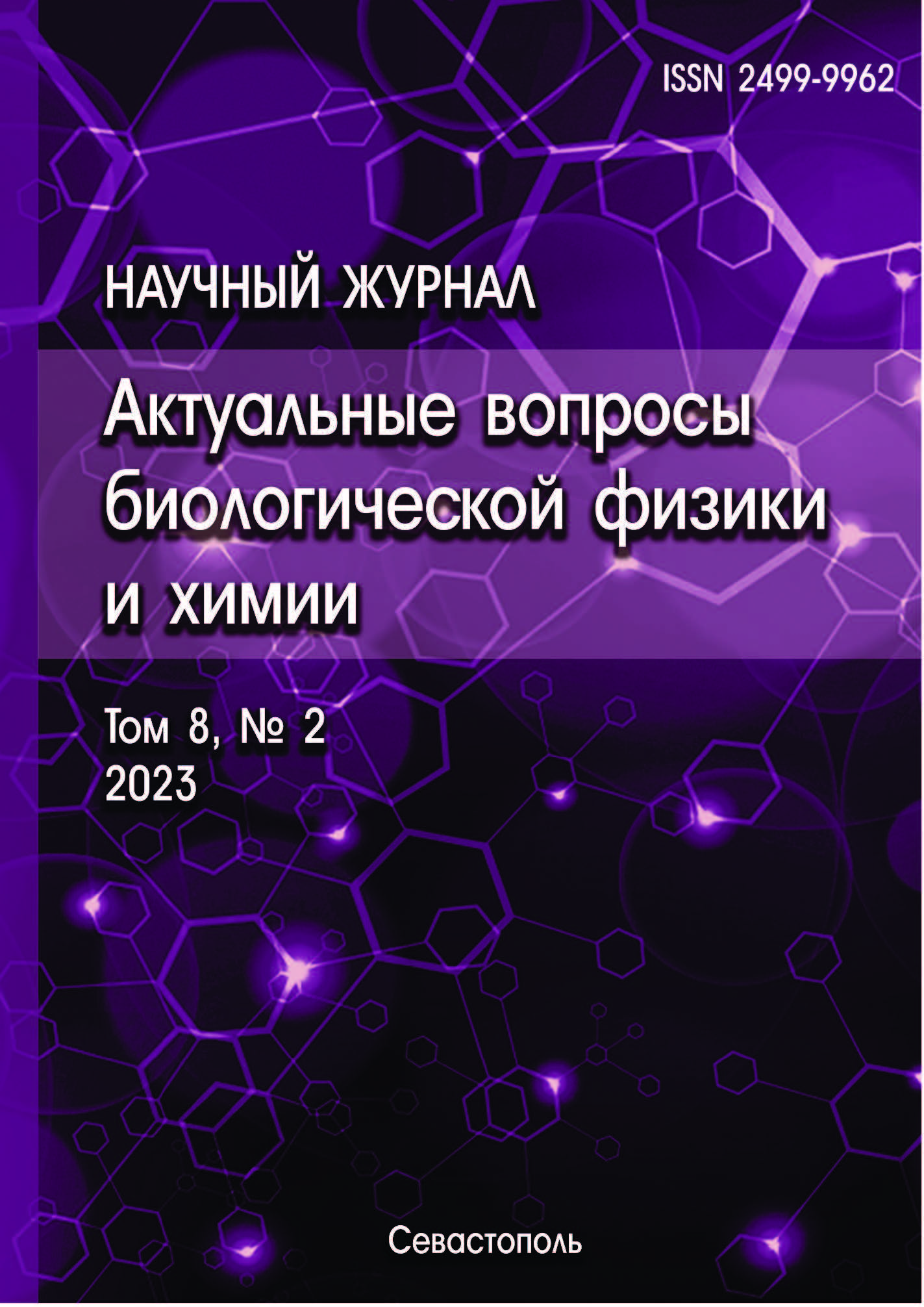Baku, Azerbaijan
Baku, Azerbaijan
Plant bioactive compounds are supposed to be the modifiers of structural-functional properties of cell plasma membrane under HM contamination. To test a protective effect of extracts from Artemisia L. species, possessing high adaptive potential to different soil contaminations, on electrical properties of algae cells under HM treatments was the aim of the present work. Extracts from Artemisia plants were isolated from above-ground parts of A.scoparia and A.szovitsiana by acetone hydrolyzation. Microelectrode techniques were used to study the regularities of change of membrane potential and membrane resistance of Chara gymnophylla and Nitella flexilis plasmalemma under influence of Cd, Cu, Zn, Pb and the extracts from Artemisia species. Statistically reliable hyperpolarizing effect of A.szovitsiana and A.scoparia extracts in relation to Zn and Pb was revealed, respectively. Elimination by extracts a decrease of membrane conductivity caused by Cd and Zn and also an increase of conductivity by Cu was determined. Though a high HM accumulation capacity of Artemisia L. species is noticed to not connect with protective effect of their extracts on membrane conductivity, they can be a potential source for the searching new chemical compounds which are capable to induce the plant tolerance to stress impacts.
Heavy metals, extracts from Artemisia L., plasma membrane of Chara gymnophylla and Nitella flexilis, protective effect, accumulation capacity, Azerbaijan
1. National Strategy and Action Plan on Conservation and Sustainable Use of Biodiversity in the Republic of Azerbaijan, Baku, 2006.
2. Valiev R.Sh., Olshanskaya L.N. Some cases of application of phytoextraction of metals. Chemistry and chemical technology, 2016, vol. 59, iss. 1, pp. 30-35 (In Russ.).
3. Kaznina N.M., Titov A.F. Effect of cadmium on physiological processes and productivity of plants of the Poaceae family. Advances in modern biology, 2013, vol. 133, no. 6, pp. 588-603 (In Russ.). EDN: https://elibrary.ru/RTMBWN
4. Titov A.F., Kaznina N.M., Talanova V.V. Heavy metals and plants. Petrozavodsk: Karelian Scientific Center of the Russian Academy of Sciences, 2014, 196 p. (In Russ.).
5. Shergina O.V., Mikhailova T.A. Phytoextraction of heavy metals by herbaceous plants on technogenic soils. Chemistry of plant raw materials, 2022, no. 4, pp. 311-320 (In Russ.). DOI: https://doi.org/10.14258/jcprm.20220411012; EDN: https://elibrary.ru/DYRDIN
6. Ali-zade V.M., Sokolik A.I., Musayev N.A. et al. Effect of extracts from Artemisia scoparia and Artemisia szovitisiana on membrane potential of Chara gymnophylla cells treated by Zn. Proceedings of IV International Scientific Conference on “Regulation of growth, development and productivity of plants”, Belarus, Minsk, 2005, pp. 14-15.
7. Takeda R., Yoshimura N., Matsumoto S. et al. Accumulation of heavy metals by Japanese weeds and their seasonal movement. Contaminated Soils, 2005, vol. 9, pp. 349-359.
8. Serkerov S.V., Aleskerova A.H., Sesquiterpene lactones of Artemisia szovitsiana. Chemistry of Natural Compounds 3,1981, pp. 397-398 (In Russ.).
9. Hogg J., Williams E., Johnston R. A simplified method for measuring of membrane resistance of Nitella translucens. Biochim Biophys Acta, 1968, vol. 150, pp. 518-520.
10. Singh H.P., Mittal S., Kaur S. et al. Document chemical composition and antioxidant activity of essential oil from residues of Artemisia scoparia. Food Chemistry, 2009, vol. 114, pp. 642-645. DOI: https://doi.org/10.1016/j.foodchem.2008.09.101; EDN: https://elibrary.ru/YAYDJJ
11. Singh H.P, Kaur S., Mittal S. et al. Essential oil of Artemisia scoparia inhibits plant growth by generating reactive oxygen species and causing oxidative damage. Journal of Chemical Ecology, 2009, vol. 35, no. 2, pp. 154-162. DOI: https://doi.org/10.1007/s10886-009-9595-7; EDN: https://elibrary.ru/YBQUDF
12. Li H.Y, Tang S.R, Zheng J.M. Copper contents in two plant species of Compositae growing on copper mining spoils. Nonhcun Shengtai Huanjing, 2003, vol. 19, no. 4, pp. 53-55.
13. Evseeva S.B., Sysuev B.B. Plant raw material extracts as component of cosmetic products and formulations for topical administration the products range, the production characteristics (review). Pharmacy & Pharmacology, 2016, no. 3, pp. 4-37.










